31 Spooky Halloween STEM Activities
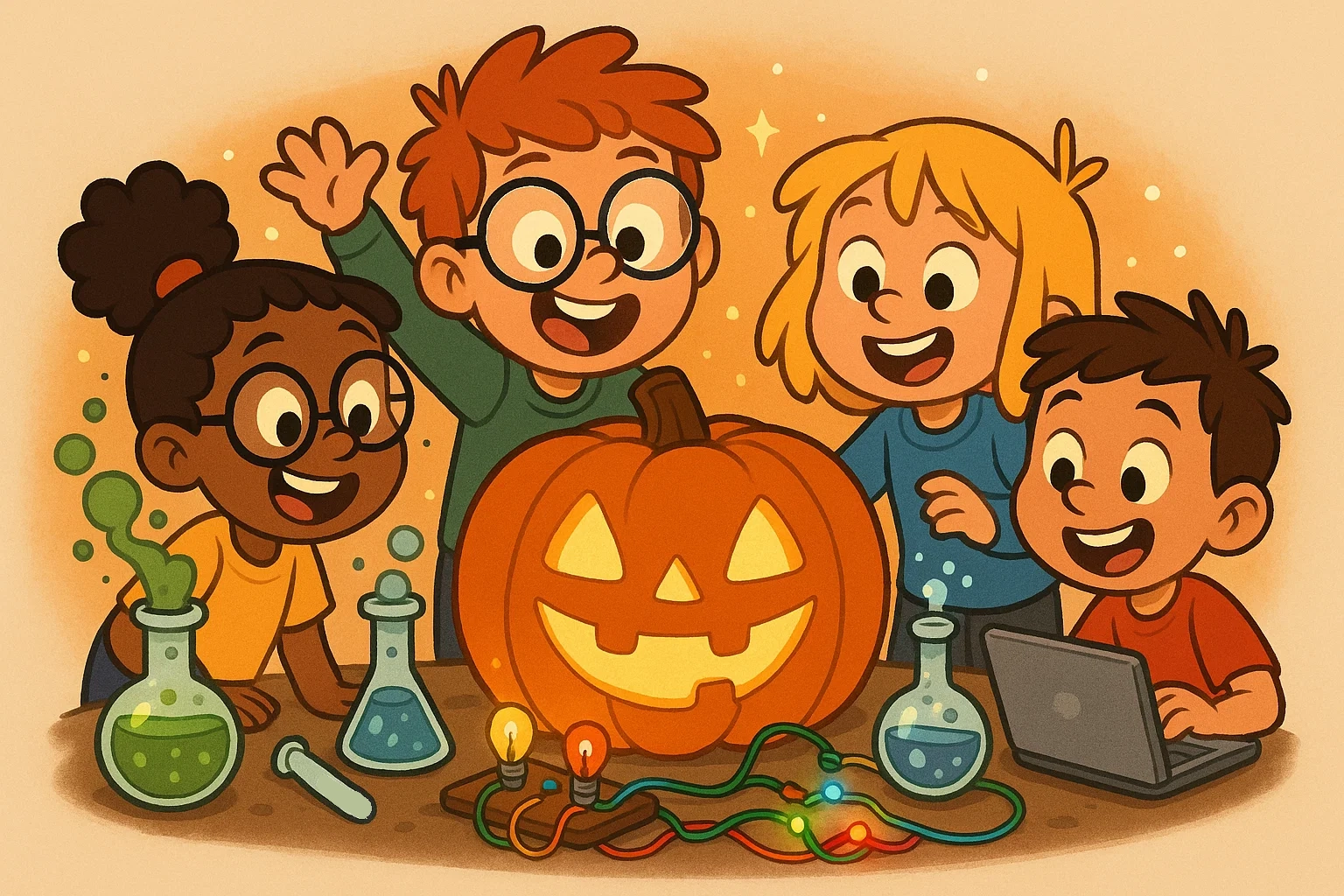
Halloween provides the perfect opportunity to combine seasonal excitement with meaningful STEM learning.
Halloween STEM activities naturally integrate critical thinking, problem-solving, and scientific inquiry while maintaining the festive atmosphere that children love.
This comprehensive guide presents 31 carefully curated Halloween STEM activities designed to spark curiosity, develop scientific reasoning, and create memorable learning experiences. Each activity has been tested in classroom settings and refined based on student feedback and learning outcomes.
Fun Halloween STEM Activities
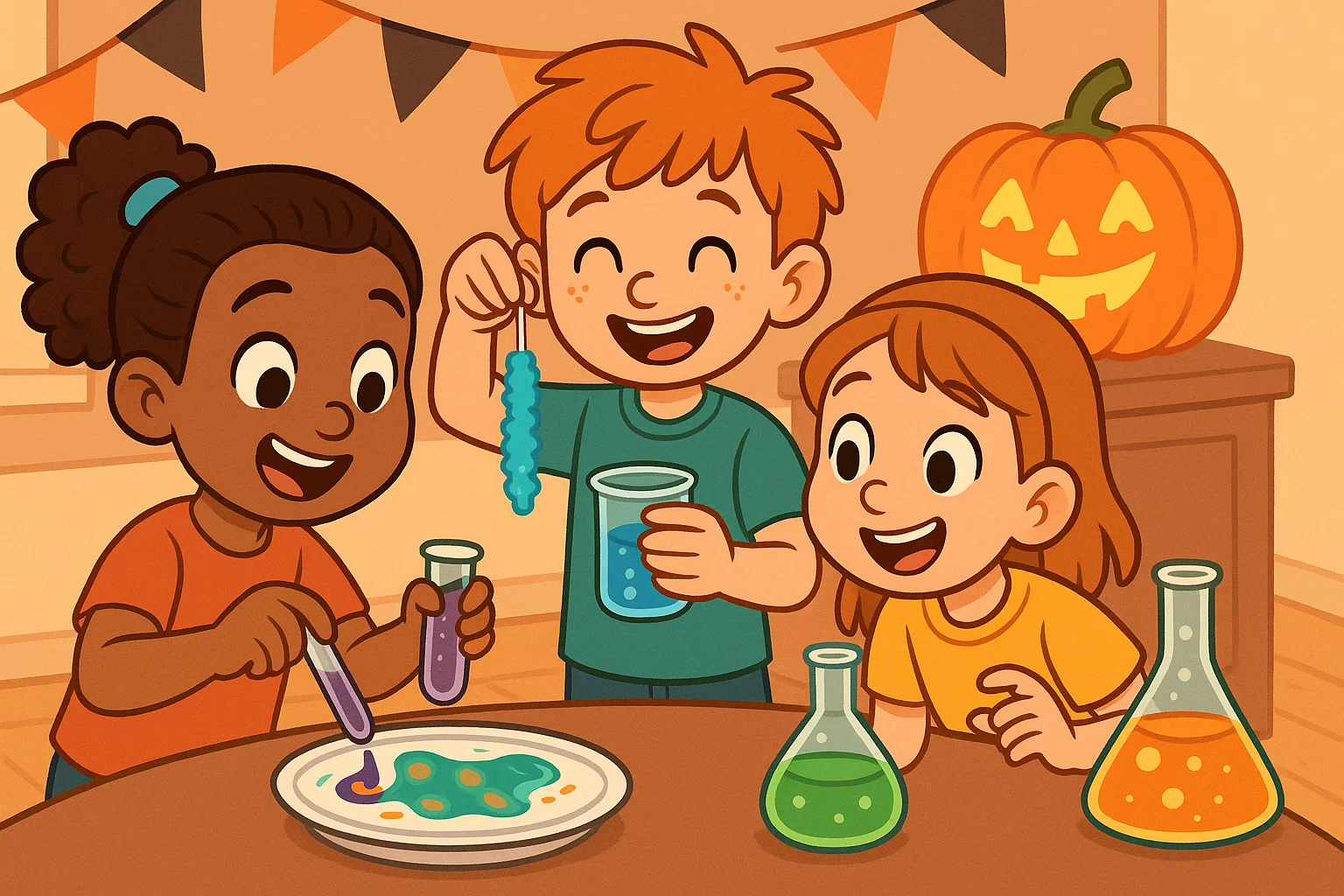
The foundation of effective STEM learning lies in activities that feel more like play than work. Halloween naturally lends itself to this approach, transforming abstract scientific concepts into tangible, spooky experiences that students eagerly embrace.
Pumpkin Science Experiments 🎃
Pumpkins serve as excellent scientific tools, offering multiple opportunities for hands-on exploration. The average pumpkin contains approximately 500 seeds and weighs between 10-20 pounds, providing substantial material for various experiments.
- Pumpkin Density Investigation: Students can explore buoyancy by testing whether whole pumpkins float in water. This simple experiment demonstrates that pumpkins typically float due to their air-filled cavities, despite their solid appearance. Students will create hypotheses about why this occurs and document their observations.
- Pumpkin Decomposition Study: Create a controlled experiment by placing pumpkin pieces in different conditions (dry, wet, warm, cold) and observe decomposition rates over several weeks. This long-term project teaches scientific observation, data collection, and introduces concepts about bacteria and environmental factors.
- Seed Counting and Statistics: After carving pumpkins, students can practice mathematical skills by counting seeds, creating graphs, and calculating averages across different pumpkin sizes. This activity seamlessly integrates math with science exploration.
Edible Halloween STEM
Combining food science with spooky themes creates memorable learning experiences while teaching fundamental scientific principles. Edible experiments engage multiple senses, enhancing memory retention and understanding.
- Halloween Color-Changing Milk: Using food coloring, cotton swabs, and dish soap, students can create spooky color reactions in milk.
- Candy Crystal Gardens: Dissolve sugar in hot water and suspend strings to grow edible crystals over several days. Students observe crystallization processes while creating sweet Halloween decorations.
- Pumpkin Spice Chemistry: Explore the Maillard reaction by examining how heat changes the color and smell of various spices.
Gummy Mummies
Gummy candy provides an excellent medium for exploring scientific concepts while maintaining Halloween appeal. These activities demonstrate how everyday materials can become powerful learning tools.
- Osmosis with Gummy Bears: Place gummy bears in various solutions (water, salt water, sugar water) and observe size changes over 24 hours. Students learn about cell membranes and osmotic pressure while watching their gummy mummies grow or shrink.
- Gummy Dissolution Rates: Test how different liquids (water, vinegar, oil) affect gummy candy.
Halloween STEM Learning
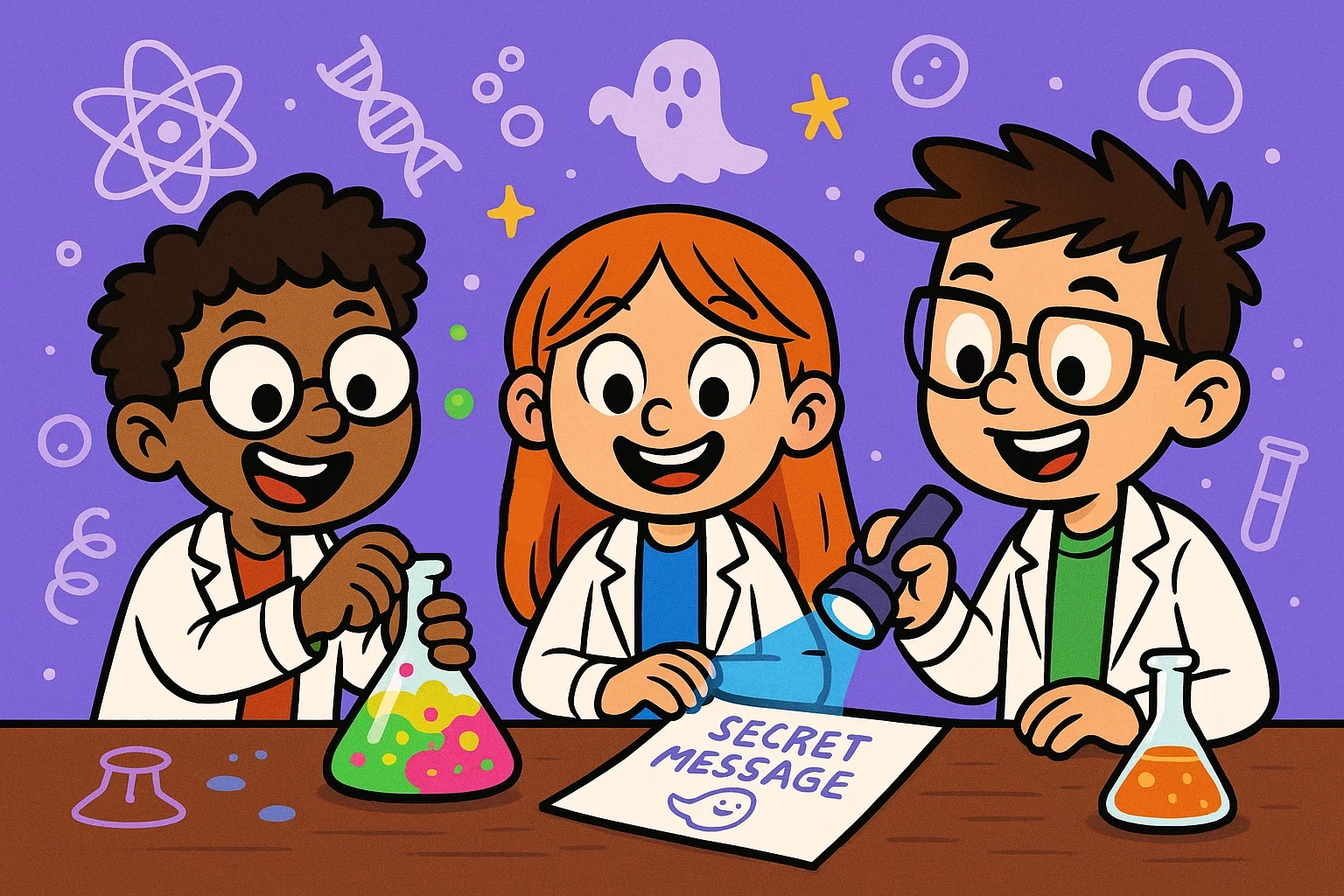
Effective STEM education requires structured approaches that build knowledge systematically while maintaining engagement. Halloween themes provide natural motivation for deeper scientific exploration.
Science Experiments for Halloween
Well-designed science experiments teach scientific method while exploring Halloween-relevant phenomena. Each experiment should include hypothesis formation, controlled variables, and data analysis.
- Invisible Ink Messages: Create spooky secret messages using lemon juice, baking soda solutions, or milk.
- Floating Ghost Experiment: Using tissue paper, helium balloons, and static electricity, create floating ghost effects.
- Color-Changing Potions: Mix various household chemicals to create color-changing reactions that resemble magical potions.
Chemistry Experiments
Chemistry experiments become accessible through spooky-themed activities that demonstrate molecular interactions and chemical reactions in engaging ways.
- Erupting Volcano Pumpkins: Hollow out small pumpkins and create baking soda volcanos inside.
- Halloween Bath Bombs: Students can create fizzy bath bombs using baking soda, citric acid, and Halloween-themed molds.
- Glowing Solutions: Create eerie glowing effects using tonic water (which contains quinine) under black lights.
States of Matter
Halloween provides numerous opportunities to explore solid, liquid, and gas states of matter through themed activities that make abstract concepts concrete.
- Dry Ice Investigations: Using dry ice safely (adult supervision required), students can observe sublimation as solid carbon dioxide transforms directly into gas, creating spooky fog effects.
- Oobleck Experiments: Create “witch’s brew” using cornstarch and water to demonstrate non-Newtonian fluids.
Here is a table summarizing the States of Matter with Halloween examples:
| State of Matter | Halloween Example | Scientific Concept |
| Solid | Ice cubes in punch | Molecular arrangement |
| Liquid | “Witch’s brew” drinks | Fluid dynamics |
| Gas | Dry ice fog | Sublimation process |
| Plasma | Jack-o’-lantern candles | Energy states |
Halloween STEM Adventures
Adventure-based learning transforms STEM concepts into exciting stem challenge activities that promote collaboration, critical thinking, and creative problem-solving.
Spooky STEM Challenge
Design challenges that require students to apply engineering principles while creating spooky-themed projects. These activities develop spatial reasoning, planning skills, and perseverance.
- Haunted House Construction: Using cardboard, tape, and basic materials, students design and build haunted houses that must meet specific criteria.
- Monster Bridge Building: Challenge students to build bridges using craft sticks, string, and tape that can support the weight of toy monsters.
Halloween Escape Room
Educational escape rooms combine problem-solving with content learning, creating immersive experiences that require teamwork and critical thinking.
- Design puzzle sequences that require scientific knowledge to solve.
- Circuit Puzzle Boxes: Create locked boxes that open only when students complete simple circuits correctly.
Halloween STEM Experience
Comprehensive STEM experience integrates multiple disciplines while maintaining thematic coherence. These extended activities can span several days or weeks, allowing for deeper exploration and reflection.
- Pumpkin Patch Mathematics: Students collect data about pumpkin sizes, weights, and characteristics.
- Scientific Investigation of Halloween Legends: Students can design experiments to test Halloween-related myths.
Halloween Science
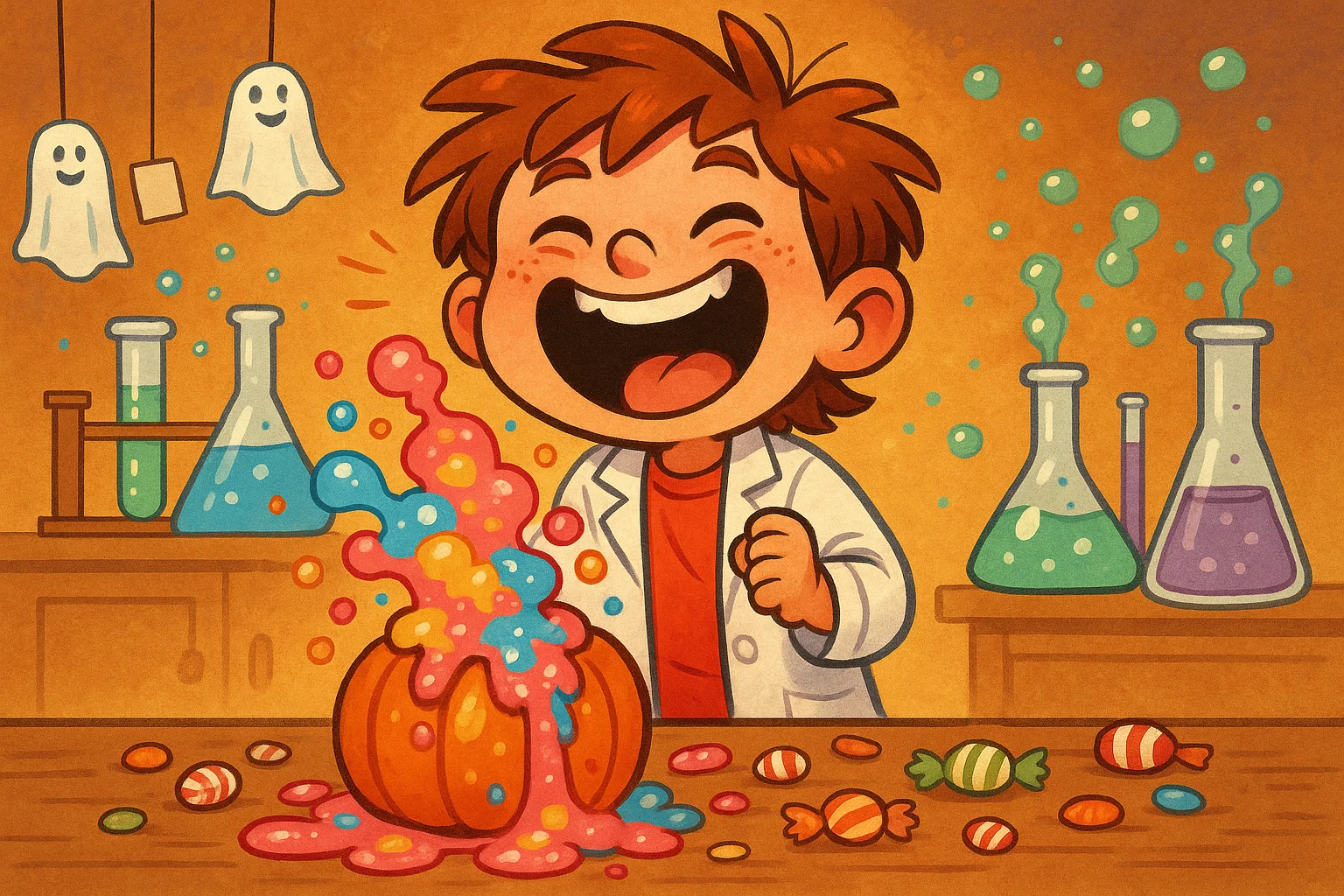
Science activities should demonstrate real scientific principles while maintaining seasonal relevance and engagement.
Dissolving Candy Experiments 🍬
Candy provides excellent material for chemistry experiments, demonstrating dissolution rates, chemical interactions, and molecular behavior.
- Candy Hierarchy Dissolution: Test how different types of Halloween candy dissolve in various liquids.
- Temperature Effects on Candy: Explore how temperature affects candy dissolution by testing the same candy types in hot, room temperature, and cold water.
Tea Bag Ghosts
Empty tea bag create perfect materials for exploring physics concepts while creating spooky effects.
- Cut tea bags into ghost shapes and light them safely (adult supervision required).
- Students can experiment with different paper weights, shapes, and sizes to optimize their ghost flight performance.
Slime and Oobleck
Non-Newtonian fluids provide fascinating opportunities to explore material properties and chemical interactions.
- Halloween Slime Variations: Create different slime recipes using various activators.
- Oobleck Investigations: Mix cornstarch and water in different ratios to create “quicksand” effects.
Halloween Density Jar
Layer different liquids and solids to create spooky density demonstrations that teach about molecular weight and buoyancy.
- Create layered jars using corn syrup, dish soap, water, vegetable oil, and alcohol.
- Students predict layer order based on density knowledge and observe how different objects float at various levels.
Halloween Engineering
Engineering challenges develop problem-solving skills, spatial reasoning, and practical application of scientific principles through hands-on construction projects.
Spider Web Engineering
Challenge students to design and build artificial spider web that demonstrate engineering principles while exploring arachnid biology.
- Web Strength Testing: Using yarn, string, or fishing line, students construct web designs and test their ability to catch and hold various objects.
- Geometric Web Patterns: Explore mathematical concepts by analyzing spider web geometry.
Candy Corn Catapult
Design and build catapults using simple machines principles while creating devices that launch candy corn or other small spooky items.
- Students can experiment with different fulcrum positions, arm lengths, and launch angles.
- Variable Testing: Systematically change one variable at a time and measure launch distance.
Mummy Hand Challenge
Create mechanical hands using cardboard, straws, and string that can be wrapped like mummies while maintaining functionality.
- This engineering challenge requires students to understand joint mechanics, leverage systems, and material properties.
Halloween Coding and Math
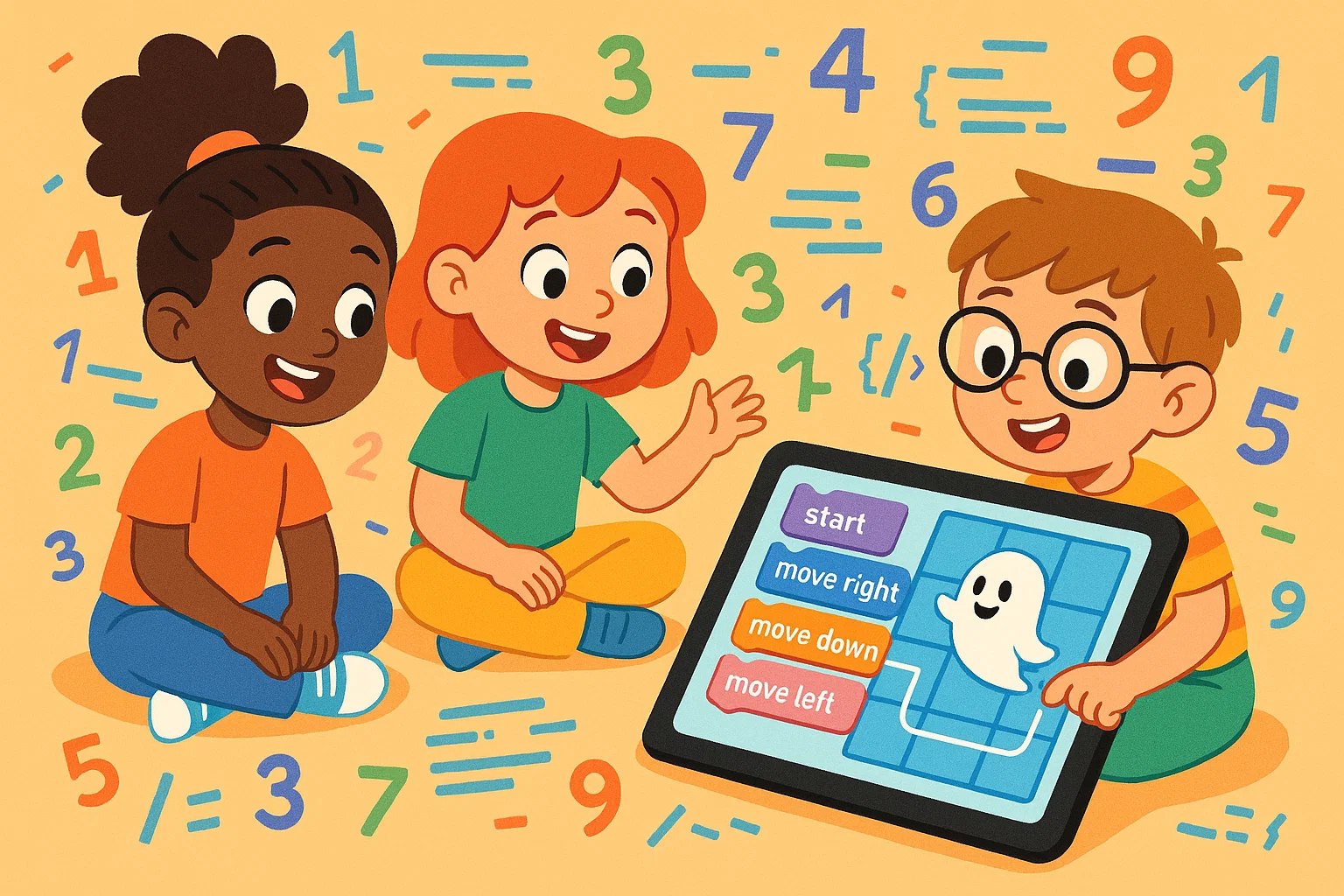
Integrating technology and mathematical concepts through Halloween themes creates relevant, engaging halloween coding learning experiences that develop computational thinking skills.
Halloween Coding Activity
Coding activity can incorporate Halloween themes while teaching fundamental coding concepts like loops, conditionals, and variables.
- Pumpkin Patch Simulator: Students can program simple games or simulations where characters navigate pumpkin patches.
- Monster Movement Patterns: Create programs that control virtual monsters moving in specific patterns.
Spooky Halloween Math
Mathematical concepts become more engaging when presented through Halloween contexts that provide real-world applications.
- Candy Distribution Problems: Create word problems involving candy distribution, cost calculations, and statistical analysis.
- Geometric Halloween Decorations: Design Halloween decorations using specific geometric requirements.
Halloween STEAM
Halloween STEAM integration adds artistic elements to STEM learning, creating comprehensive experiences that appeal to diverse learning styles and interests.
- Digital Halloween Storytelling: Combine coding with creative writing by programming interactive spooky stories.
- Mathematical Art Projects: Create spooky-themed art using mathematical principles.
The Best Halloween Activities
The most effective Halloween STEM activities combine multiple learning objectives with high engagement levels, creating memorable experiences that reinforce key concepts.
Activities with Candy
Candy-based experiments are consistently popular because they combine learning with familiar, appealing materials that students can often take home or consume.
- Candy Chromatography: Separate dyes in colored candies using coffee filters and water.
- Structural Candy Engineering: Build bridges, towers, or other structures using marshmallows and toothpicks.
Pumpkin Volcano
Transform traditional volcano experiments by using hollowed pumpkins as volcano structures. This creates more dramatic visual effects while maintaining scientific accuracy.
- Students can experiment with different chemical ratios to control eruption intensity and duration.
- Safety Considerations: Always emphasize proper safety procedures, including eye protection and adult supervision when necessary.
Flying Bats and Ghosts
Explore aerodynamics and flight principles through Halloween-themed flying objects that students design and test.
- Paper Airplane Bats: Design bat-shaped paper airplanes and test how wing shape affects flight characteristics.
- Balloon Ghost Helicopters: Create rotating helicopter-like devices using balloons and lightweight materials.
Spider Projects
Arachnid-themed projects provide opportunities to explore biology, physics, and engineering concepts while addressing common fears.
- Web Vibration Studies: Create artificial spider web and test how vibrations travel through different materials.
- Spider Robotics: Design simple robots or mechanical devices that mimic spider movement patterns.
FAQ
What is a skeleton made of?
A skeleton is typically made of bones, but for a Halloween STEM project, you can make a flexible one out of construction paper. This is a fantastic way for kids can make a model while learning about how joints work.
How do you build a candy catapult?
To build a device like a candy catapult, kids use simple materials like craft sticks and rubber bands. This fun activity is a great Halloween project where kids will learn about physics and engineering principles. The science behind it involves understanding how to launch cotton balls or small pieces of candy as far as possible.
What is a Halloween STEM project for middle school students?
Halloween STEM projects for middle school students can involve more advanced topics. For example, you can implement with middle schoolers a spooky themed project where they unleash spooky science by creating a glowing liquid or a escape room to solve puzzles with logic and chemistry. These activities provide a great way to focus on STEM learning.
